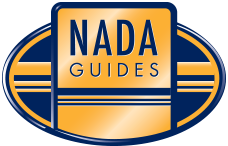
Purchasing a boat is an exhilarating adventure, but it often comes with a hefty price tag. In fact, a surprising 70% of boat owners opt to finance their vessels due to the high costs associated with ownership. This guide aims to clarify the complexities involved in financing a boat, ensuring that you make informed decisions that align with your financial circumstances and aspirations.
Understanding Boat Loans
At its core, financing a boat is similar to securing a personal installment loan. Lenders provide a fixed sum of money that borrowers repay over time, typically with interest. However, boat loans often entail higher interest rates compared to loans for essential items such as cars or homes. The average interest rate for a car loan currently rests around 4%, while recreational boat loans hover between 6% and 8%. The reason? Boats are considered luxury items, increasing the risk for lenders. In times of financial hardship, borrowers are more likely to prioritize their car or home payment over their boat loan, which can lead to higher rates.
Types of Boat Loans
There are three primary types of loans available when financing a boat:
-
Secured Loans: These loans are backed by collateral, such as a savings account or another vehicle. If borrowers default on their loan, lenders can claim the collateral to recover their funds. Because this type of loan represents a lower risk for lenders, interest rates are typically lower.
-
Unsecured Loans: Unsecured loans do not require collateral and hinge solely on the borrower's creditworthiness. Approval is based primarily on credit score and financial history, meaning interest rates can be higher. Lenders are usually more selective with such loans, often requiring higher credit scores for approval.
-
Second Mortgages: For those who want to avoid personal loans, a second mortgage might be an option. Here, a borrower’s home serves as collateral, making these loans riskier but often featuring lower interest rates.
Preparing for a Boat Loan
Before diving into the world of boat financing, it is essential to prepare adequately:
Check Your Credit Score
Your credit score is a crucial element in determining loan approval. Generally, a score above 600 is required to secure a recreational loan. Several online platforms, such as Credit Karma, enable users to check their credit scores for free. However, it's vital to remember that lenders commonly use FICO scores rather than Vantage scores.
Assess Your Debt-to-Income Ratio (DTI)
Lenders also evaluate your debt-to-income ratio (DTI), which represents the percentage of your income that goes toward debt payments. A DTI above 40-50% can be problematic when applying for a boat loan. Ensuring a healthy ratio is an important step in preparing for financing.
Stability in Employment and Housing
The more stable your work and housing situation, the more favorably lenders will view your application. Stability suggests reliability, which is appealing from a lender’s perspective.
Going Through the Approval Process
To start the financing process, seeking pre-approval can save time and provide valuable insights into available loans. Many marine dealerships offer in-house finance applications that send requests to various lending partners. Alternatively, borrowers can apply independently with multiple lenders.
Many lenders will require a down payment, typically ranging from 10% to 20% of the loan's value. However, some options may allow for lower down payments.
Making the Right Choice
Once pre-approval has been achieved, the next step is comparing offers. Consider total loan amounts, interest rates, fees, and repayment terms. Generally, longer loan terms result in lower monthly payments, but they come with higher total interest costs. Shorter terms might increase monthly payments but will save you money in accumulated interest.
Example Calculation
For illustration, let’s assume the purchase of a boat costing $50,000 with a six percent interest rate over 15 years. Monthly payments would be approximately $421.93. If the interest rate increased to eight percent due to a lower credit score, the monthly obligation changes to about $477.83. Maintaining a good credit score not only affects your potential loan approval but can also help manage your monthly budget.
Tips for Reducing Loan Costs
To minimize financial burden, consider making extra payments when possible. Putting an additional amount toward the principal—say $50 each month—can expedite loan repayment, reduce interest paid over time, and ultimately save money.
The Bottom Line
Financing a boat can be a smart long-term investment if approached with caution and thorough research. For those unable to purchase outright, understanding loan options, preparing financially, and making informed comparisons can lead to a successful purchase. Ultimately, borrowing to acquire your dream boat allows for flexibility—just keep a close eye on interest rates, loan terms, and payment schedules to sail smoothly through your financial journey.
About NoCredit Campers
NoCredit Campers specializes in providing affordable RV and camper financing solutions for customers with all credit backgrounds. Our mission is to help everyone experience the joy of RV ownership, regardless of their credit history. With a wide selection of campers, travel trailers, and motorhomes available through flexible rent-to-own and buy-here-pay-here options, we make your camping dreams a reality. Visit us at https://nocreditcampers.com to explore our inventory and learn more about our easy financing options. Adventure awaits – let NoCredit Campers be your gateway to the great outdoors!




